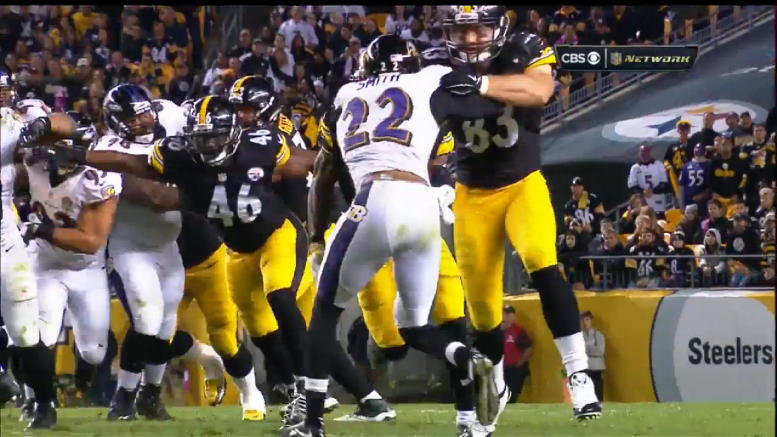While the Pittsburgh Steelers may have originally signed Will Johnson as a free agent with an eye toward making him a fullback, the reality is that he had already begun to shift substantially away from that role in 2014 after just two seasons. With the emergence of Roosevelt Nix in 2015, his role as a fullback had become moot.
But that is what he was intended to be initially—largely, anyway. His entrance into the league coincided with the Steelers’ hiring of Todd Haley to be their offensive coordinator, and with it, a renewed interest in the concept of a fullback.
At the time, there was a position battle poised to take place during training camp to be decided between Johnson, the rookie, and David Johnson, the incumbent, whom the Steelers gradually flexed out to tight end, only to move him back.
The latter Johnson suffered a torn ACL in the preseason, however, negating the potential for a true position battle, which the rookie Johnson thus ‘won’ by default, and he played a surprisingly notable role, logging over 250 snaps as a rookie and receiving his most active playing time to date.
In 2013, the Steelers offense began relying increasingly on three-receiver sets as Haley gave Ben Roethlisberger more leeway to run the no huddle offense, and with that came a reduced need or use for a fullback. Johnson’s usage rate went down substantially.
So during the 2014 offseason, Haley devised that Johnson flex out his resume, and the team began the process of converting Johnson into a tight end—which is the primary role that he served that season as the team largely abandoned the two-back set.
In fact, of Johnson’s 219 snaps during the 2014 season, only 50 came as a fullback, lined up in the backfield as a lead blocker. This does not include his one snap as a runner and an additional 17 snaps as a “running back” in the victory formation.
In all, Johnson instead played 152 snaps as a tight end, producing a better than three-to-one ratio with regards to his snaps as a tight end versus his snaps as a fullback. He did see a slight increase in his total workload as a result of him transitioning to tight end, but that would not continue into the 2015 season.
The addition of Nix obviously was a blow to Johnson’s role in the offense, as the first-year player took up about 150 of the snaps that used would have formerly gotten, the vast majority of which came from the backfield. But the addition of rookie tight end Jesse James, whose insertion into the offense midseason, limited him even more.
Johnson only saw 92 snaps during the course of the entire season, 10 of which came on kneel downs. He and Nix only saw the field together on 17 snaps. James, meanwhile, saw 216 snaps, including the postseason, and is only poised to expand his role. Only two of Johnson’s snaps came as a fullback, and both came after Nix’s injury, but his transition away from the backfield had already been in full swing.








